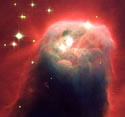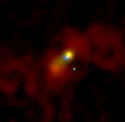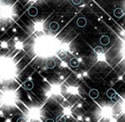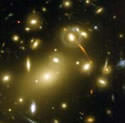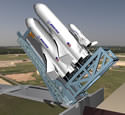
Image credit: Boeing
NASA believes it’s one step closer to replacing the aging space shuttle fleet. After analyzing hundreds of potential vehicle concepts, the Space Launch Initiative (SLI) has short listed the potential suppliers down to three teams: Boeing, Lockheed Martin, and Orbital Sciences/Northrop Grumman. Each team has provided several ideas that fulfill the requirements of the SLI: carry humans and satellites into orbit; carry government or commercial payloads; be operated by the private industry; and launch at a fraction of the cost of the space shuttle.
NASA is another step closer to defining the next-generation reusable space transportation system and successor to the Space Shuttle.
The Space Launch Initiative (SLI), a NASA-wide effort defining the future of human space flight, has completed its first milestone review ? resulting in a narrower field of potential candidates for the nation’s second-generation reusable space transportation system.
“To use the resources afforded by space, it’s critical to increase reliability and safety while at the same time reducing the cost of space transportation,” said Art Stephenson, director of NASA’s Marshall Space Flight Center, Huntsville, Ala., which manages the SLI for the Office of Aerospace Technology. “The Space Launch Initiative is doing the groundwork to accomplish these goals and create a second-generation launch system.”
“We’re not just designing a launch vehicle,” added Dennis Smith, also of Marshall, program manager of the Space Launch Initiative. “We’re designing the complete system.”
The recent review, called the Initial Architecture Technology Review, analyzed and evaluated competing second-generation reusable space transportation architectures and technologies against NASA and commercial mission requirements, as well as safety and cost goals.
Architecture refers to the complete transportation system design ? that is, the vehicles and their components that fly into space, as well as the ground operations needed for launch. The transportation system design includes an Earth-to-orbit reusable launch vehicle (the Space Shuttle is the first-generation reusable launch vehicle); on-orbit transfer vehicles and upper stages to put satellites into orbits; mission planning; ground and flight operations; and support infrastructure, both on orbit and on the ground.
Three contractor architecture teams ? The Boeing Company of Seal Beach, Calif.; Lockheed Martin Corp. of Denver; and a team including Orbital Sciences Corp. of Dulles, Va., and Northrop Grumman of El Segundo, Calif. ? presented dozens of potential architectures for review. Following the review, each retained a handful of possible candidates for the nation’s next-generation reusable space launch system.
The review allows the Space Launch Initiative to target investments and support what the program manager called the “up-front, homework part of the program” ? furthering technologies to aid in the development of a second-generation reusable launch vehicle. Another review will be held in November to further narrow potential space transportation architectures to two or three choices.
“We’re going to seek the final and best ideas from industry, academia and government,” said Smith. With the final selection of an architecture, full-scale development of a reusable launch vehicle could begin around the middle of this decade.
Since propulsion systems require a long lead-time to design, develop, test and evaluate, it isn’t surprising that propulsion analysis was a chief driver through the recently completed review activity.
“We spent a lot of time analyzing propulsion technologies,” said Smith. “Among the outcomes is a focus on kerosene-fueled main engines.” This focus is based on studies, conducted by the architecture contractors that examine performance of competing technologies in safety, reliability, cost and operability. Studies indicated that kerosene main engines have excellent potential to meet government and commercial needs. The second-generation vehicle will have a two-stage-to-orbit propulsion system based on engines fueled by all kerosene, all hydrogen or a combination of kerosene and hydrogen.
Dependable, long-life engines, along with crew escape and survival systems, and long-life, lightweight integrated airframes are among the Space Launch Initiative’s highest priorities. Each greatly impacts the program’s bottom line of increased safety, reliability and cost effectiveness.
Original Source: NASA News Release

